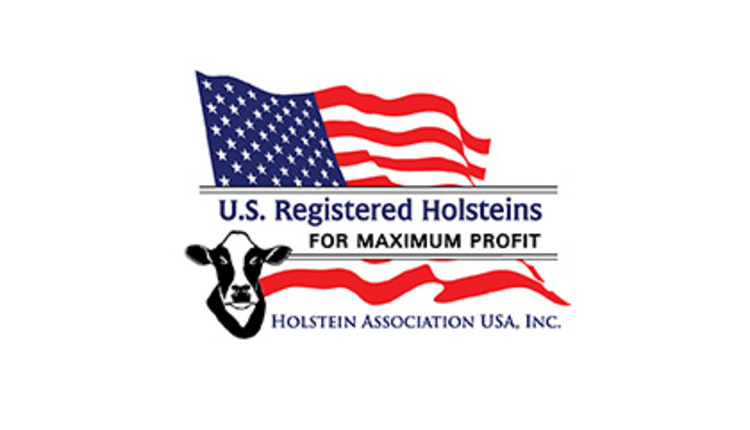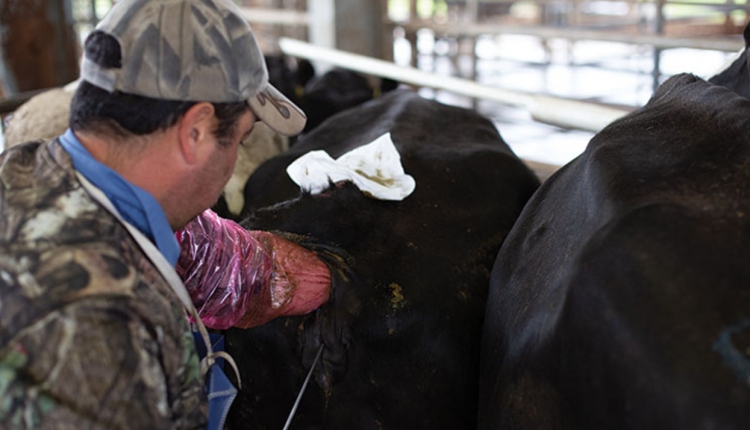The author is an associate professor of dairy cattle genetics at Penn State University.
In a previous column, I discussed a project that was developed to explore genetic diversity and to re-establish two lost Holstein paternal lineages. The oldest of the bulls have now reached sexual maturity with semen soon to be available. This presents a good chance to talk about the issue of genetic diversity and give some thoughts on whether we can recapture lost genetic variation in the genomic era.
The paternal lineage of nearly all Holstein A.I. sires can be traced back to two famous bulls from the 1960s — Pawnee Farm Arlinda Chief and Round-Oak Rag Apple Elevation. There are one or two exceptions to this, but their male lineage eventually merges with that of Chief. For a thorough discussion on this topic, read “Holstein lineages trace back to two bulls” in the March 25, 2015, issue of Hoard’s Dairyman on page 219.
Bringing back genetics
There were at least two Holstein A.I. sires from the 1950s that did not merge with either Chief or Elevation and that no longer have descendants through their paternal line. Those bulls were Rosafe Caliban and Zimmerman Alstar Pilot. The Caliban line now has two sons at Select Sires and the Pilot line has four sons at Penn State that will be a year old this coming November. The bulls at Select Sires are sired by Caliban’s son Cuthbert, who was born as part of a long-term selection experiment at the University of Minnesota.
A common perception is that genetic variation lost from some family lines is most likely gone for good reason. If a bull was not popular, and did not have sons or daughters that performed well, then we are better off without their genetic material. That is certainly true to a large degree; however, it is never quite that simple. It is possible for an animal to have poor genetic merit overall and yet carry unique and performance-enhancing genes that we simply don’t recognize because the rest of their poor genome masks those favorable genes.
Look at the numbers
Let’s compare the founders of our existing male lineages with the bulls whose lineages have been re-established. Their NM$ (Net Merit $), DPR (daughter pregnancy rate), PTAT (type), fat yield, protein yield, and percent relationship to the current Holstein population are included in the table. Keep in mind that these bulls were born over a half-century ago, so we expect their genetic merit to be low today.
What jumps out in the table is the bull that is least related to our current population (Pilot) had a better combination of daughter fertility and production than Chief or Elevation. We did not consider female fertility in our genetic selection programs until at least three decades after these bulls were popular, so we had no idea of their genetic merit for daughter fertility at the time the bulls were active.
Pilot daughters did have poor type and his sire fertility may have been low, so he was not popular compared with Chief or Elevation. Nevertheless, it is quite possible that Pilot has long lost female fertility and production genes that could contribute favorably to today’s population. While Caliban’s fat and protein production was not as good as the other bulls, he too was favorable for daughter fertility.
Swine provide insight
Is it possible for us to reintroduce lost and valuable genetic variants back to the current population in a meaningful way? Yes, but it would be a long process and would take commitment on the part of cattle breeders.
An excellent example of introducing novel genetic material comes from the swine industry. There is a breed of native Chinese pigs with poor production traits but with exceptional litter size. Scientists were able to trace their larger litter size to a genetic variant of the estrogen receptor locus — that genetic variant has now been backcrossed into most commercial swine lines.
Cattle have a longer generation interval, which makes such a process more difficult for us. Unfortunately, genomic predictions are not precise when it comes to detecting the best performance genes in older and unique genetic lineages.
Genomic prediction requires two critical components: genotypes and phenotypes to associate with the genotypes. We can generate sons from older or unique bulls and genotype those sons; however, we will also need daughters in order to generate the needed phenotypic data to enable more accurate genomic predictions in the future.
The challenge of generating a meaningful number of daughters can be demonstrated by considering the genetic merit for these bulls. The bulls of the Caliban line both are slightly negative NM$ (-$12 to -$22), whereas the Pilot bulls are more variable (+$2 to+$150). The top bulls currently have NM$ in excess of $1,000. While many breeders are concerned about inbreeding levels and want to add genetic diversity, the gap in genetic merit between modern and old genetics is significant.
The genomic inbreeding levels for these bulls are near zero compared to numbers in excess of 12 percent for the average genomic young bulls. Bulls that qualify as high NM$ outcross sires according to the CDCB (Council on Dairy Cattle Breeding) have genomic EFI (expected future inbreeding) that ranges from about 7 to 9 percent. The genomic EFI for these bulls is about 5 percent, so offspring of these bulls will be less inbred than what can be achieved with current outlier pedigrees.
Every 1 percent increase in inbreeding is associated with a reduction of approximately 2 pounds of fat and 2 pounds of protein. While that level of inbreeding depression is not trivial as we approach an average of 8 percent inbreeding in Holsteins, it is also not severe enough to offset low PTA for fat and protein from old genetic lines.

Study paternal lines
These lost lineages were identified based on their male line and the potential to study lost Y chromosomes, which of course are only transmitted through paternal lineages. We also will evaluate the performance of their sisters at Penn State and determine how their performance compares to expectation when they enter the milking herd. And of course, we would also like to generate some daughters from these unique bulls. Semen from these lineages will be available from Select Sires.
Is there room for us to recapture lost genetic diversity, and is such diversity really that important? Only time will tell in our fast-paced, genomic-selection world. It will require patience, and there may well be better sire lines than the ones we’ve initially selected, but we can be sure that we’ve lost some diversity that would benefit the performance of today’s cattle.











